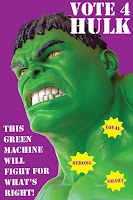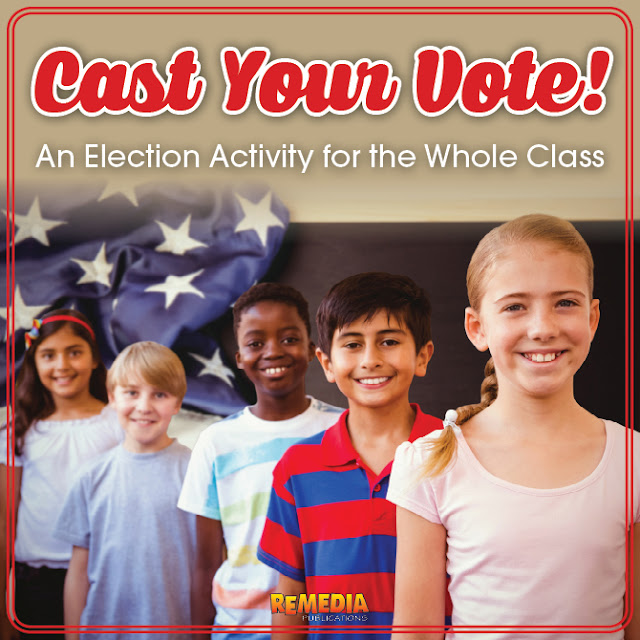Teach students about the voting process with this fun and cross-curricular activity for the whole class. While you are teaching about U.S. government, elections, and the voting process, this activity will help students have a hands-on understanding of the process. Students will create candidates, make campaign slogans, give speeches, cast votes, and so much more. Bonus! Get free downloads below.
The CandidatesSkills Covered
This activity isn't just a social studies activity. You can make this project even more meaningful by introducing vocabulary, math, writing, research, and reading. Here's how:
Vocabulary - While doing this activity be sure to use key vocabulary terms, such as ballot, candidate, election, and so on.
Math - Counting, adding, graphing, percents, the list goes on and on. Students can tally the votes and turn this information into bar graphs, percentages, and more.
Writing - Take the time to teach students about persuasive writing. What are the keys to writing persuasively to convince your readers that your candidate is the best?
Speaking - Have students read their persuasive writing aloud, give speeches, and convince their classmates to vote for their candidate.
 Have students pick their favorite fictional character, either from a book, TV, or movie. Then, have each student make a campaign poster for their character. Along with drawing a picture of the character, or printing one offline, they should also:
Have students pick their favorite fictional character, either from a book, TV, or movie. Then, have each student make a campaign poster for their character. Along with drawing a picture of the character, or printing one offline, they should also:- List at least three reasons this character should be president.*
*Choose any title: governor, senator, or even class mascot. - Create a campaign slogan. Tip: This is a wonderful way to reinforce your lessons on fact and opinion.
Primary Election
Now have students present their character to their group, explaining why this person/character should become president. Tip: This would be a great time to discuss or interject a lesson on persuasive writing and/or speaking. After each student has presented their candidate to their group, each small group should take a vote choosing which candidate they want to represent their group, or political party, in the general election.
General Election
Once each group (political party) has chosen a candidate, the five students who won the primary election will present their character to the entire class.
After each student has given their speech, create a simple ballot form or download this ballot to complete, and make enough copies for each student <free download>.
On voting day, set up voting booths at the back of the classroom. A simple way to do this would be to put a large, open cardboard box on its side, on top of a desk. Students can take turns going to the polls throughout the day.
As each student casts their vote, they can slip their ballot into the the ballot box. An empty tissue box will do just fine.
If you have any students absent during this project, create an absentee ballot so that these students can be involved in the voting process as well. Have these students research and write about what an absentee ballot is and how it felt to take part in voting like this.
Tally the Votes!
Have a few students count the votes to find out who won. Take these numbers and turn them in to a graphing exercise.
Bonus Tip: Modify this activity from characters to "laws" by having students come up with a new law, or way of doing things, that they would like implemented in the classroom.
Free DownloadStudents will cast their #vote with this #election activity for the whole class via @remediapub { Tweet This }
If you don't have time for a big project like this in your classroom, we've got you covered! Download these worksheets <free download> all about voting.
Need more activities to support your lessons on government? Get our U.S. Government reproducible activity book, which will give your students a close-up look at the inner workings of our government in action. You'll take them inside the Constitution, the justice system, the legislatures, the elective process, and more. Or try our Voting Vocabulary Unit!

